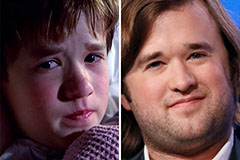Tracing the Origins of Classic Fairy Tales
Fairy tales have ancient roots, with many stories whispered from one generation to the next long before they were ever written down.
These stories have been shaped by various cultures, spanning Europe, the Middle East, and Asia.
Originally, these stories were exchanged among adults, usually containing themes and lessons that aligned with the societal norms and beliefs of the period.
The Brothers Grimm, Jacob and Wilhelm, were among the first to compile and publish many of these beloved tales in the early 19th century.
The Grimm Brothers' compilation, "Grimm's Fairy Tales," contained tales like "Cinderella," "Hansel and Gretel," and "Snow White," which are now cornerstones of classic fairy tales.
Likewise, Hans Christian Andersen's enchanting tales, including "The Little Mermaid" and "The Ugly Duckling," have captured hearts globally, establishing their place among classic fairy tales.
The Significance of Fairy Tales in Today's Society
Even with their historical roots, fairy tales maintain their relevance, especially as bedtime stories for kids.
These enchanting stories can be found in multiple formats today, such as beautifully illustrated books, captivating animations, and free fairy tales online.
The continued charm of these tales can be linked to several magical factors:
Moral Lessons: Classic fairy tales commonly present significant moral teachings.
Stories like "The Boy Who Cried Wolf" teach the value of honesty, while "The Tortoise and the Hare" highlight the virtues of perseverance and humility.
These tales present children with clear moral lessons, assisting in the development of their moral compass in a subtle but profound manner.
Empathy and Understanding: These narratives regularly involve characters enduring trials, prompting readers to empathize with their challenges and applaud their triumphs.
For example, "Beauty and the Beast" teaches the significance of seeing beyond external looks to understand a person's inner nature, promoting empathy and understanding.
Cultural Insights: Numerous fairy tales are steeped in the cultural traditions from which they grew.
Exploring these tales can offer enchanting insights into various traditions, beliefs, and societal systems, promoting a sense of worldwide awareness and appreciation.
Imagination and Creativity: The fantastical elements in fairy tales—talking creatures, magical spells, and enchanted woods—ignite children’s creativity.
These stories transport readers to otherworldly realms, read more encouraging creative thinking and a sense of wonder that lasts a lifetime.
Why Fairy Tales Are Educational
Classic fairy tales are not only enchanting but also educational.
They serve as magical tools in developing various cognitive and emotional skills in children.
Reading these stories aloud enhances language development by offering new vocabulary and complex sentence structures.
This practice enhances listening abilities and concentration, as kids hang on every word, eagerly awaiting what happens next.
Moreover, talking about fairy tale themes and characters can sharpen critical thinking and analytical skills.
Children learn to identify patterns, make predictions, and understand cause and effect.
Talking about these tales helps children express their thoughts and feelings, contributing to their emotional intelligence.
The Online Presence of Fairy Tales
In today’s digital age, the availability of free fairy tales online has made these stories more accessible than ever.
Online sites and apps present vast collections of classic fairy tales that can be enjoyed at any time, from any place.
Reading fairy tales aloud is especially popular, offering an engaging method for kids to enjoy these enchanting stories.
Audiobooks and read-aloud videos animate characters and settings, typically accompanied by magical sound effects and music that enrich the storytelling.
The Unchanging Magic of Fairy Tales
The enduring allure of classic fairy tales comes from their capacity to evolve with the times while preserving their fundamental messages.
Modern versions of these tales frequently feature more varied characters and contemporary settings, enhancing their relatability to today’s audience.
Nevertheless, the fundamental themes of bravery, kindness, and fairness remain unchanged, continuing to resonate with readers of all ages.
Fairy tales also offer a sense of comfort and familiarity.
They provide a structured narrative with a clear beginning, middle, and conclusion, often finishing with the resolution of conflicts and the triumph of good over evil.
Such predictability can comfort kids, offering a sense of stability in an ever-changing environment.
Wrap-Up
Classic tales enchant and educate, keeping their enchantment and relevance in today's world.
As bedtime tales for children, they offer an ideal mix of wonder and wisdom, fostering moral values, empathy, and creativity.
The accessibility of free fairy tales online and the popularity of read-aloud fairy tales ensure these timeless stories remain within reach for new generations.
Maintaining and sharing these narratives lets us celebrate the vibrant fabric of human imagination and cultural traditions.
Whether you are reading an exquisitely illustrated book, browsing an online library, or listening to an audiobook, the enchantment of classic fairy tales remains accessible.
These narratives remind us of the enduring magic of storytelling and its ability to bridge time and places, weaving an enchantment that delights and educates.
 Haley Joel Osment Then & Now!
Haley Joel Osment Then & Now! Tony Danza Then & Now!
Tony Danza Then & Now! Alisan Porter Then & Now!
Alisan Porter Then & Now! Tina Majorino Then & Now!
Tina Majorino Then & Now! The Olsen Twins Then & Now!
The Olsen Twins Then & Now!